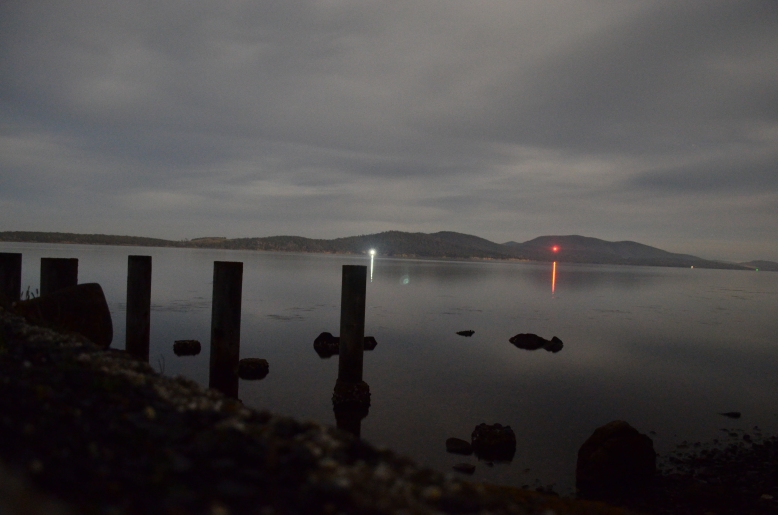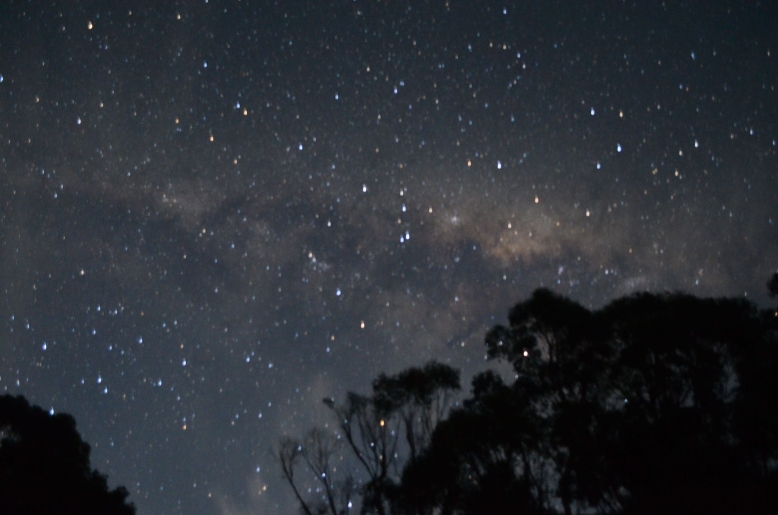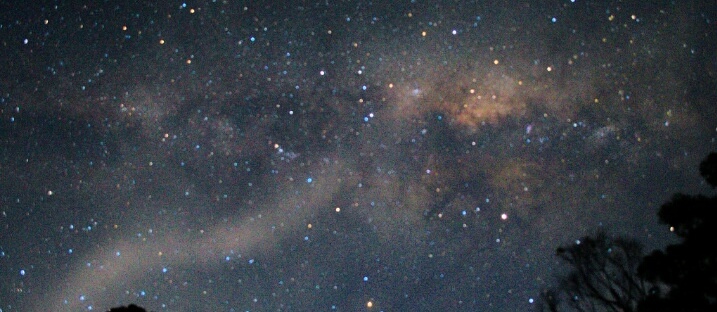I was lucky enough to get to head down to Tasmania recently (specifically to Hobart) for a conference in early July this year.
I’m currently in the final stages of a PhD looking at transmission of bacterial pathogens using genome sequencing, so that was what the conference was vaguely based around, or at least parts of it. While the conference itself was pretty interesting, travelling for work obviously also means you can look into other interesting things in the areas you visit.
For some time before going to Tasmania I’d had my eye on a couple of things that I wanted to see – both of which are fairly unpredictable and both of which are fairly spectacular. So, essentially they were things I really wanted to see but things that are not reliable enough to organise a holiday around.
The first one was bioluminescence in the ocean, the second was the southern lights (or Aurora Australis).
Bioluminescence has been around for ages in all sorts of plants and animals, but in recent years, strong bio has been cropping up around various parts of Tassie (http://www.abc.net.au/news/2017-03-15/bioluminescence-event-lights-up-northern-tasmanian-beach/8355912) with some impressive results. The brilliant blue glow is caused by some small plankton which light up in response to the right conditions and agitation (I’m not an expert though so if you want some more detail on this whole process I’d recommend some googling).
There are some great Facebook groups on bioluminescence in Aus and specifically Tassie – which can provide tips and hints on how to find it, as well as alerts when other “bio frackers” find it when out searching. One big thing to remember, though, is that the plankton is a living thing that can move and responds to it’s environment in ways not 100% predictable, so while you can have days are that more or less likely, a lot of it is down to luck.
Similarly, though not a living organism, the Aurora Australis can be stunning but unpredictable. Whilst there are some pretty good apps and site and groups out there, and while the science behind predicting the aurora is relatively reliable, there are other factors at play too, like clouds or fog or light pollution.
Bio tends to be more common when it’s warmer – I get it; if I was a plankton in the waters around Tassie I’d prefer to party on warmer nights (hahah) and I was there in early July. Bio had been around but had been less common leading up to when I got to Tassie. So, I thought maybe I should try and go to find the southern lights instead. Maybe I had a better chance.
I downloaded an app to monitor solar flare activity and (contrary to all sensible advice) I posted on an Aurora Australis group on Facebook, basically saying that I was in town for a few nights and keen to see the lights – but I didn’t have a car or really any night photography experience so needed someone to take me with them if they were going out hunting.
A guy responded that he had recently started doing night photography and he was going out to try and capture the lights that night with a friend and I was welcome to join. The sensible part of me was thinking that maybe meeting a complete stranger off the internet and driving off into the wildness of Tassie in the middle of the night wasn’t such a great idea. But I was in luck!
A few other people noticed the post and were keen to join. At 10pm that night I met three cars and eight other people on the jetty near my hotel. There were two locals – including the guy who’d offered me a lift. Two girls originally from Korea, studying at Sydney Uni and down for the week, two guys from Malaysia over on a holiday, and a newly married couple of Singapore in Tassie for their honeymoon!
From Hobart we set out south and drove for over an hour. There were clouds around so we kept going further south in the hopes of getting past them. The app said there was a reasonable chance of solar flares and lights so we were hopeful though equally trying not to get our hopes up.
We ended up somewhere on the coast, south of an adorably named town called Snug (I couldn’t quite tell where because my phone lost all reception including GPS), a little before midnight. I’d worn thermals under my jeans and brought my warmest coat which I’d been starting to think was over the top for the conference but was so glad of it out there that night.
Cloudy at first, things eventually started to clear. We thought (hoped, perhaps?) we could see a faint greenish yellow glow on the horizon. I’d never done night photography before but the two local guys had an showed me the best way to set up my camera to capture the stars and the lights if the Aurora properly showed.
[An interesting side note here; often, unless the Aurora is really strong, you can’t see any colours with the naked eye and they only show up on camera. I didn’t actually realise this until I’d starting reading up on it prior to my trip, but I think it’s important to know what you’re looking for so you don’t give up too early. Sometimes people are lucky and when it’s really strong you can see great colours without the aid of cameras and lenses.]
Unfortunately we didn’t really see the Southern lights. We saw something that could have been it hiding behind the clouds, and the wishful thinking part of me has decided that it was the aurora. However, despite that I had an amazing night. We didn’t get back my hotel until almost 3am in the morning – which was actually the start of my birthday!
I’d learned how to to night photography and even got some pretty nice shots of the milky way and nebulas among the stars, and maybe saw a bit of the aurora. And I met bunch of lovely people who were crazy enough to come out into the wilderness in the middle of the night with a bunch of strangers, to chase the elusive southern lights. I would absolutely do it again!
It was my first time shooting at night so the pictures aren’t the best but I was/am pretty pleased with my first attempt and looking forward to more attempts at finding the aurora (in either hemisphere!) in the future!

Looking out across the water while waiting for the clouds to clear a bit, a little after midnight

Clouds starting to clear, and stars beginnings to shine through!

A little blurry (was using my handbag for a camera rest/tripod) but you can see the milky way, some nebula/dust clouds, and the curved tail of scorpio!

Milky way again, near the bottom, tail of scorpio near the centre

That was the most beautiful thing I saw today!! Great job, mesmerizing shots.
LikeLiked by 1 person
Thanks so much! It was a great night with some beautiful stars out 😄
LikeLiked by 1 person